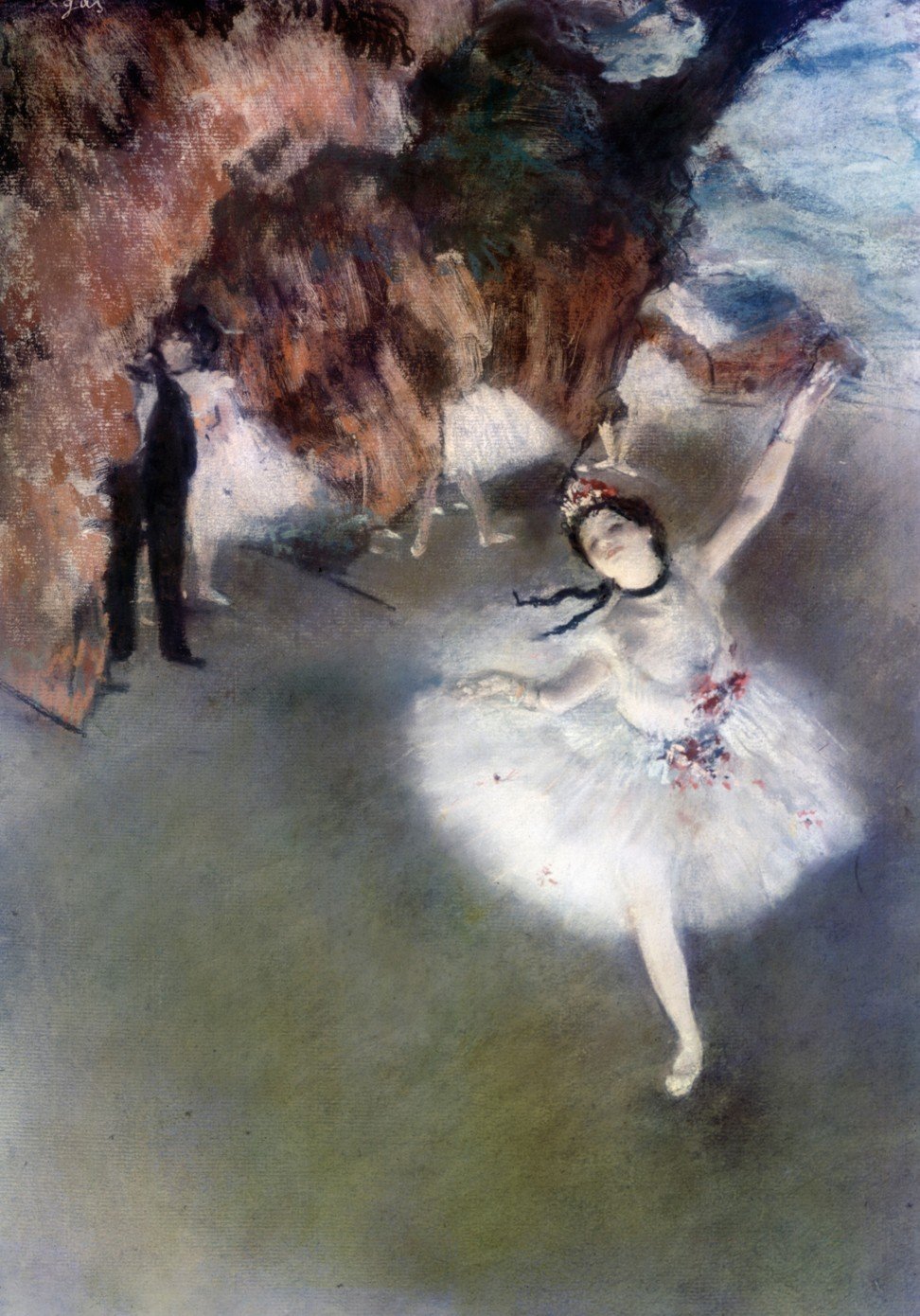
How Edgar Degas revealed Paris opera’s magic and murkiness – without actually being there
- ‘Degas at the Opéra’, an exhibition showing at the Musée d’Orsay in Paris, shows the French artist as a fabulist, his art coming from the imagination
- Casting off false notions about Degas frees us to perceive the Paris Opéra’s significance to him
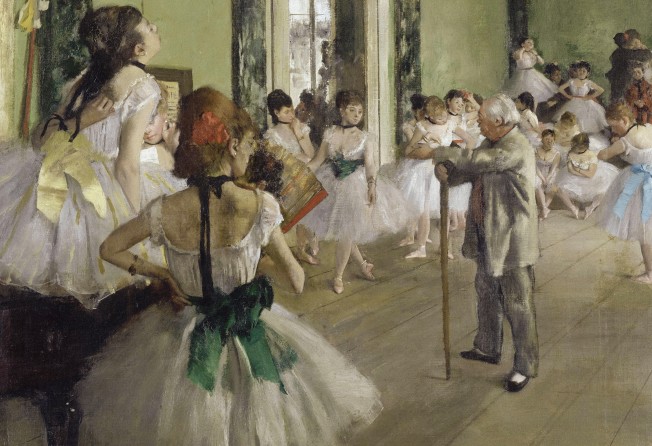
Fake news and truth, the terms we hear so much about lately, are supposed to be mutually exclusive. Truth is obdurate and aloof. Fake is fake: it’s a sham. Simpering and obscene, it demeans everyone it touches.
We want – we need – the distinction to be clear-cut, since so much rides on it. But in the realm of art, things are more complicated. Take Edgar Degas, for example, whose work is now the subject of a sprawling, stupendous show, “Degas at the Opéra”, at the Musée d’Orsay in Paris.
Degas is supposed to have been on the side of truth. But truth in art and truth in public life are very different things. And we get Degas badly wrong if we mistake him for a documentarian.
The standard Degas narrative is that he dispensed with the stale repertoire of religious, mythological and historical subjects and turned his gaze instead to contemporary life: Paris’ racetrack, cafe concerts, milliners’ shops, brothels and ballet classes. Everyone knows, too, that Degas helped form the Impressionist group – and what was Impressionism about if not showing the world as it is?

That story is fine as far as it goes. But neat stories – especially those involving sunlight and poppy fields – do not really adhere to Degas. He was an indoor creature, slightly vampiric, ferociously independent. (“If I were the government,” he once said, “I would have a special brigade of gendarmes to keep an eye on artists who paint landscapes from nature. Oh, I don’t mean to kill anyone; just a little dose of birdshot now and then as a warning.” And you want to call this guy an Impressionist?)
In the century since Degas’ death, the idea that he embraced Impressionist-style spontaneity and natural light has been hard to shake. So has the notion that he was an intrepid realist haunting the hidden corners of Paris. But when we look at Degas through the lens of the one subject that dominated his oeuvre – the Paris Opéra – both notions finally fall apart.
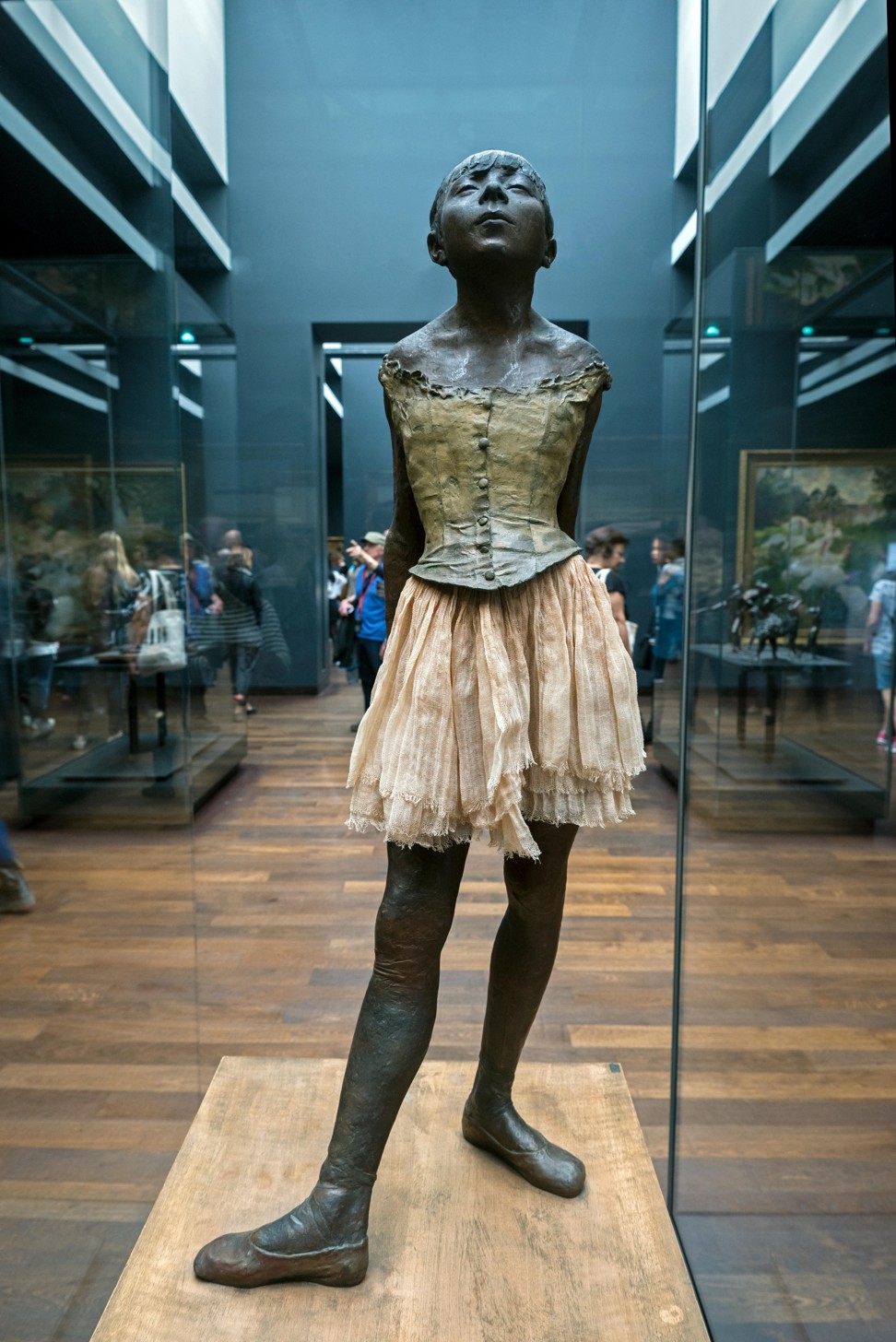
Unlike other subjects, which Degas treated only sporadically, the Opéra was a continuous subject for about four decades. As you move from one image to the next in this show (which was organised by Degas biographer Henri Loyrette, with the help of Leila Jarbouai and Marine Kisiel of the Musée d’Orsay and Kimberly Jones of the National Gallery), you could be fooled into imagining that Degas was giving you a brisk tour of the Opéra building: here is the stage … there is the orchestra … here are the dancers … here is where they rehearse … and here is where the gentlemen subscribers in top hats come to procure sexual favours.
Surely not from those sweet ballerinas in tutus? The “little rats”? Yes, from them. Degas, however, was no tour guide. Nor was he a journalist. For him, it all went far, far deeper. Everything he did had an underlying aesthetic rationale. And everything was invented.
That is right: Degas was a fabulist. His art was a studio product. (“No art is less spontaneous than mine,” he said.) It did not come from standing about in the fields like a cow. It came from hard work and imagination, and always drew from the Old Masters, toward whom Degas’ reverence was palpable.

Even the settings of the Opéra works were mostly invented. The first Paris opera house Degas came to know was on the rue Le Peletier. Already scheduled for demolition by the time he started attending, it was destroyed by fire in 1873. The fire kick-started the stalled construction of the new opera house, the opulent Palais Garnier (the famous setting for The Phantom of the Opera), which finally opened in 1875.
But Degas much preferred the old building, so he proceeded as if the Palais Garnier simply did not exist: the identifiable settings of almost all his depictions of the Opéra are in the destroyed building on the rue Le Peletier.
So much for truth-telling. Casting off false notions about Degas frees us to perceive the Opéra’s significance to him. Certainly he was attracted to the music. Degas was an aficionado, with sophisticated tastes. He loved 18th-century composers – Bach, Rameau and especially Gluck – and rejected the cult of Wagner then sweeping Europe.
But the deeper reason the Opéra seduced him as an artist stands in plain sight: it was a place of make-believe, of spectacle, of artifice. For Degas, according to Loyrette, it was a “closed universe”, a “microcosm of infinite possibilities, allowing all kinds of experimentation”.

Degas revelled in this. In his Opéra pictures, he played with points of view and contrasts of light and dark; with movement and gesture; with cropping and composition; and with format, medium and scale.
The Opéra’s appeal must also have been psychological. Anyone who goes to the theatre gets it immediately. Stage, backstage, curtains, scenery, audience: the atmosphere is infectious. You feel the thrill of voyeurism, the possibility of adopting alternative personas, the tart, vinegary taste of so much brazen artifice.
In his great essay The Painter of Modern Life, Charles Baudelaire argued that beauty is composed of two equal parts. One part hinges on eternal values; the other is “relative, circumstantial” and plugged into the contingent present. Degas – perhaps even more convincingly than his friend Édouard Manet – met the challenge of how to express such beauty pictorially.

He united suggestions of an impersonal, Arcadian dream with an intense, streaming, present-tense intimacy. The intimacy burns cleanly, drawing its fuel from Romanticist colour and movement and its oxygen from modern disjuncture. The Arcadian side of his work, meanwhile, draws on the timeless spell of ancient Greece. Only the Opéra gave Degas the licence to bring all this together.
The first of his Opéra-inspired works was an 1867 depiction of a well-known dancer, Eugénie Fiocre, on the set of a ballet, La Source. For many years, the picture confused art historians, because it looks like a landscape – a mountain scene in the Caucasus, no less, replete with a horse drinking from a stream. All that gives it away as a stage set for a ballet is a pair of pink ballet slippers visible between the horse’s front legs.
Over the next few years, Degas painted many astute portraits of singers and musicians. He made a breakthrough in 1870 with The Orchestra at the Opera, a portrait commissioned by the bassoonist Désiré Dihau. It shows Dihau in his natural habitat – the orchestra pit at the Opéra, surrounded by fellow musicians.
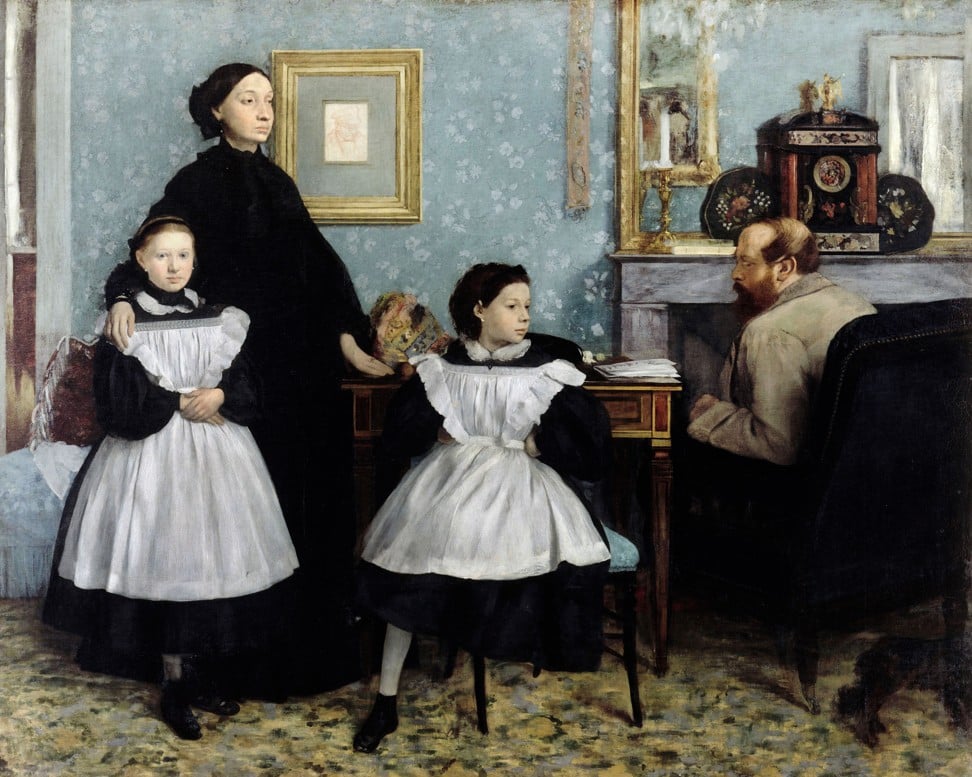
Degas returned repeatedly to this composition – the dark pit in the lower half, the colourful stage above. It looks spontaneous, but the tableau was entirely artificial. The bassoonist, for starters, would not have occupied a place in the orchestra’s front row. Nor did the musicians sit at right angles to the stage.
So many incredible images unfurl like a Chinese scroll painting from these early breakthroughs. The most famous, of course, are the dancers. Degas depicted them stretching at the bar, retying their slippers or perched atop a grand piano while stretching and scratching their backs.
Here again, though, he freely invented features of the rooms they occupy and concocted details of their activities. When he asked a friend, Albert Hecht, for a pass permitting him to see the weekly dance examinations, he sheepishly admitted: “I have done so many of these dance examinations without having seen them that I am a little ashamed of it.”
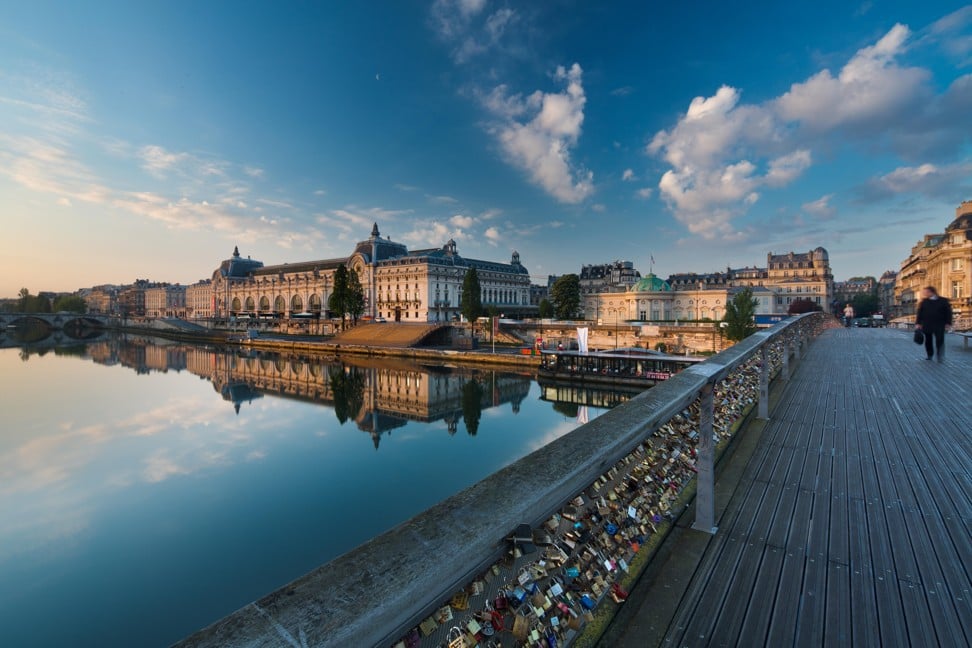
Next door to the Opéra was a brothel. Degas did not ignore the sad, seamy fact of their connection. Yet again, though, his vision was filtered through someone else’s imaginings. Inspired by bestselling novellas by a friend, the librettist Ludovic Halévy (who collaborated with Bizet on Carmen), Degas depicted men propositioning the young dancers. Most were desperately poor, working-class girls. Those who trafficked in sex were often pimped by their own mothers. In a series of monotypes, Degas even takes us inside the brothel and – uncharacteristically – lets his revulsion show.
As he aged and his eyesight slowly deteriorated, Degas maintained his devotion to themes he had been inspired by at the Opéra. Retreating from his earlier fascination with people as unique psychological entities immersed in social space, he turned instead to a more private vision.
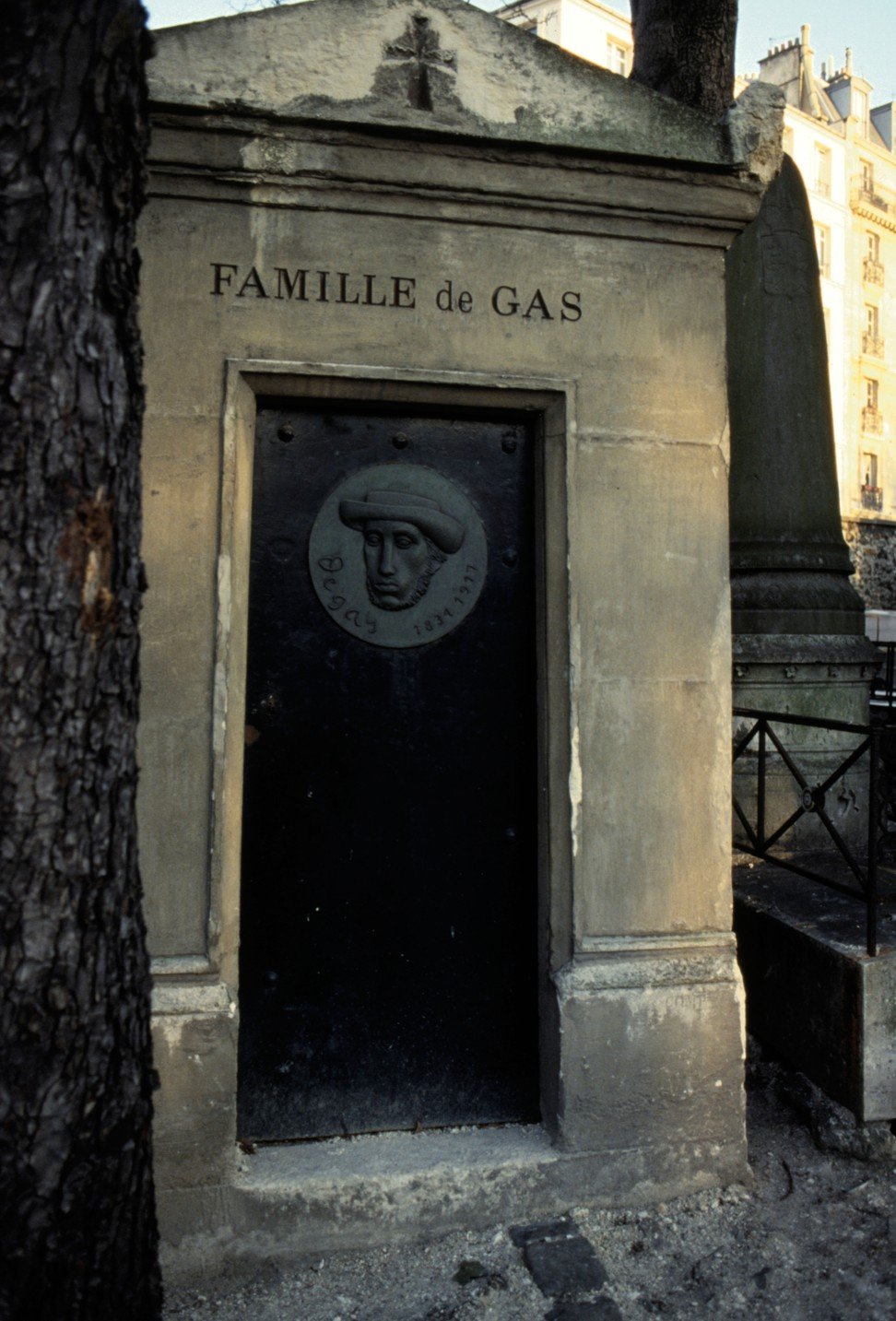
His late dancers (clumps of overlapping girls resembling many-limbed, many-headed monsters, weirdly endowed with their own interiority) amount to a kind of long and death-haunted monologue – obsessive, ravished and, in the annals of art, unprecedented.
“Degas at the Opéra” through January 19 at the Musée d’Orsay, Paris